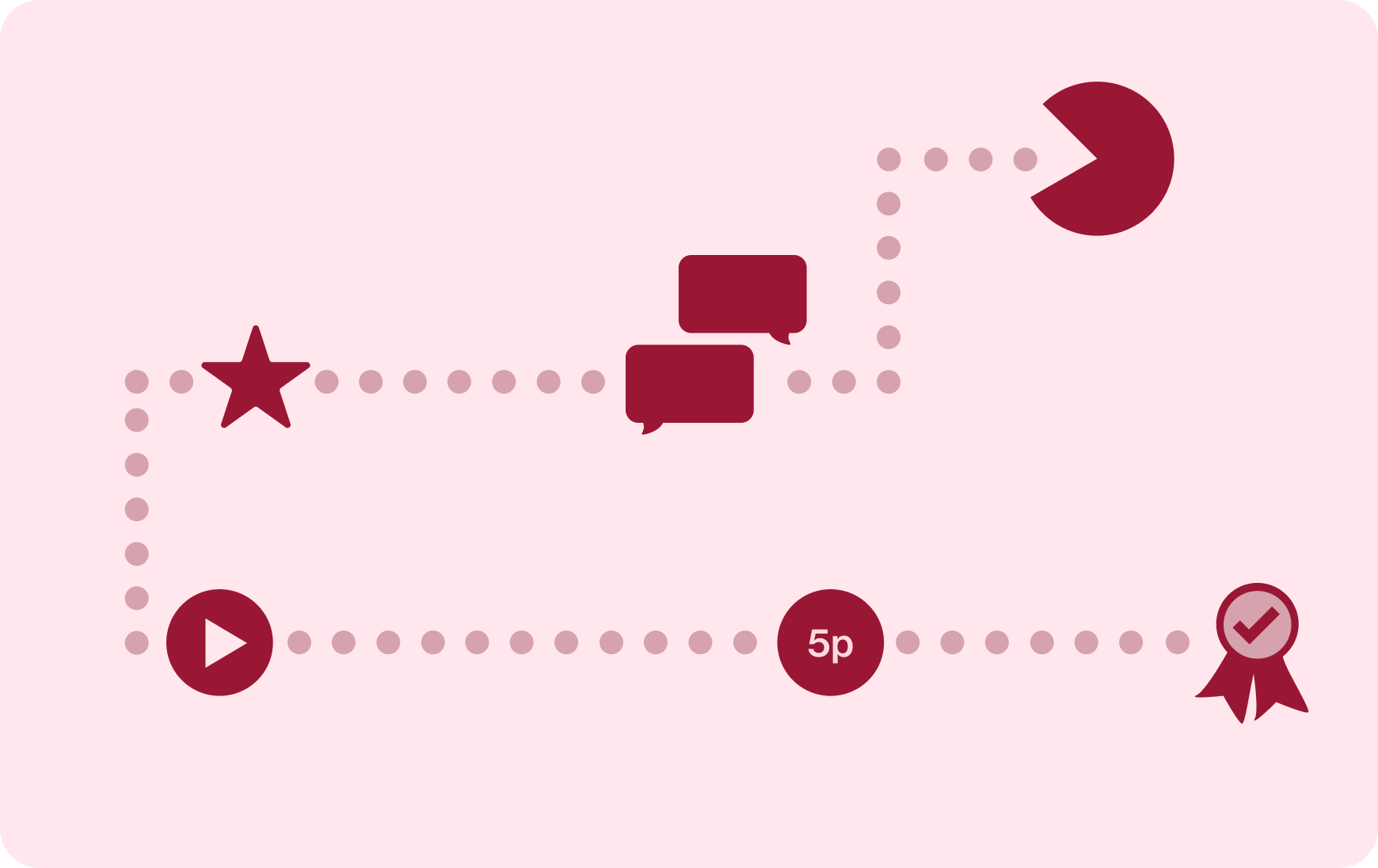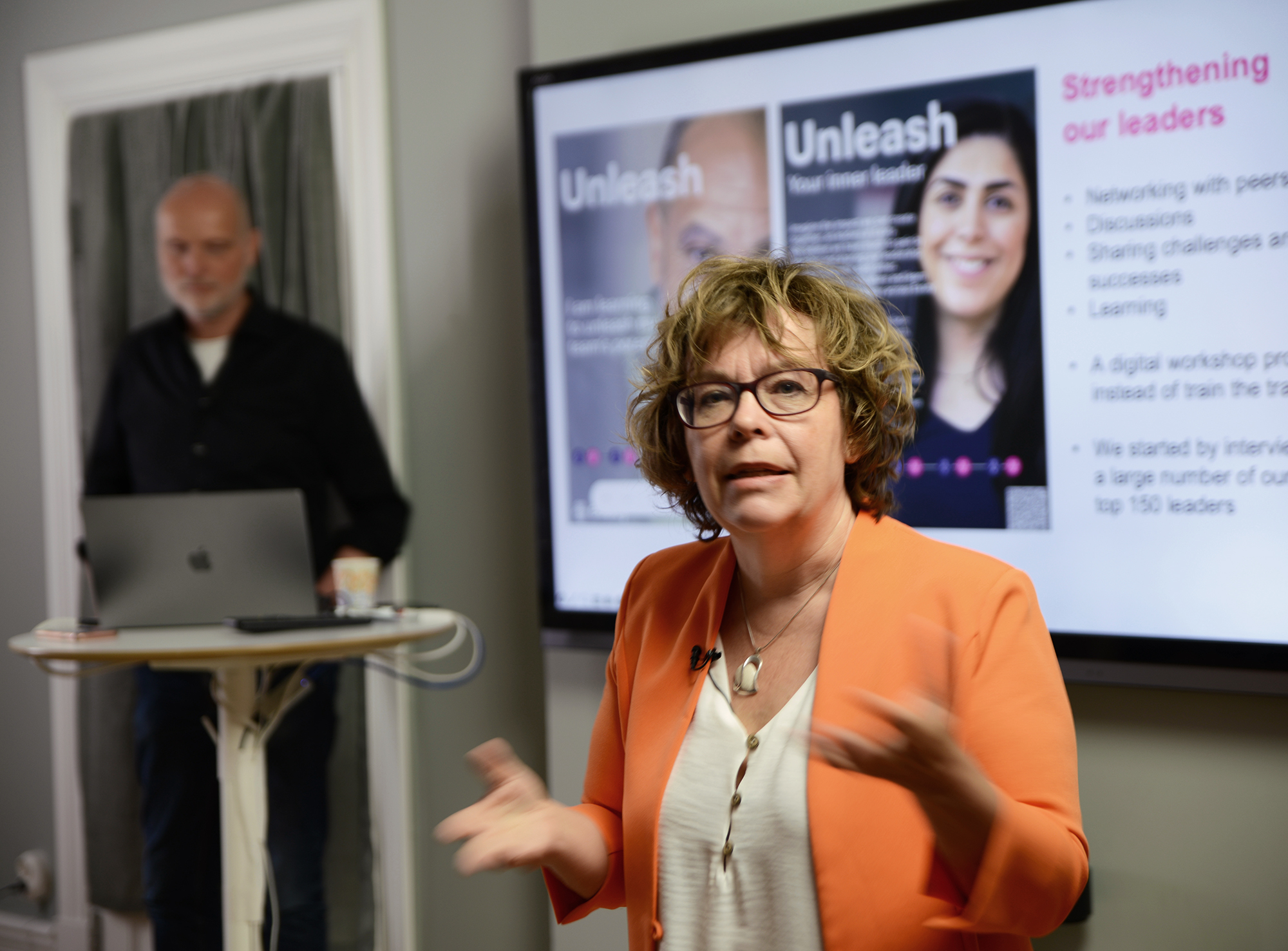Here are the top five reasons why gamified learning is so difficult to create, and our recommendations on the best way to approach and overcome each challenge.

Gamification is the key to engaged learning
Gamification has been the holy grail in learning since long before learning went digital. It’s easy to understand why. A great game engages people and motivates people in a way normal education rarely does. Engaged learners have fun repeating the training and retain more. Gamified learning also lets learners apply knowledge in a safe space where it’s OK to make mistakes.
After all the years I’ve worked with digital learning, the standard solution for creating gamified learning is still to add a knowledge quiz. Usually, the quiz checks that the learner didn’t sleep-click through the theoretical parts of the training. It’s often not a core part of the learner’s journey.
Evolution in gamified learning design
Way back in the 90s, I had some commercial success with the knowledge-based computer game BackPacker.At Funkis, we’ve developed a lot of gamified learning solutions over the years, and won gold at the Learning Technologies Awards for Best Learning Game. But even with that kind of experience, it’s not easy to create a good, gamified learning that contains more than just a quiz. That’s why we recently changed our approach towards gamified learning. Based on our experiences, we’ve created a structured method for working with clients to turn learning into a game. And we’ve recently updated our authoring tool to support our method, making developing gamified and adaptive learning easier.
Top 5 challenges in creating gamified learning
Let’s have a look at the top five reasons why gamified learning is so difficult to create. And what we think is the best way to approach each challenge.
1. Find the right balance between game design and learning objectives
It’s easy to fall in love with an exciting game concept. But how do you know it will work for your learning objectives?
There’s a natural contradiction between an engaging game and rigid learning objectives. A game is never fun or engaging because the goal is to learn A, B and C. Instead, the game design should encourage you to learn A, B and C because the knowledge will help you win the game. This is the key to a good learning game.
Solution: Create a relevant story that gives a reason for the goal and helps you progress in the game. A good start could be to look at the main objective of the learning and add a twist. Then make sure mastering the learning objectives is the best way for the learner to win the game.
2. Adapt the game to the corporate environment
Some game genres come with a look and feel that can be tricky to adapt to a corporate environment. Even if your game is fun, neon-coloured candy or cute, animated trolls might not be in line with your corporate identity. And if the game will be used globally, it will also have to work in all cultures.
Again, it can be difficult to find the right balance. It’s tempting to play it safe, but that sometimes means you kill creative ideas and end up with a boring game. On the other hand, a wild and experimental game designer without a good understanding of the target group can confuse or even upset some of your learners.
Solution: Identify the key elements of the game design. Find a look and feel that appeals to everyone in the target group without compromising the original game design.
3. Alignment between the stakeholders
This is probably where most learning games fail – and the main reason why big dreams of an exciting learning game often end up with a simple knowledge quiz. Creating a good game requires both knowledge about the topic and skills in game design. This combination most often involves two or more people who need to communicate closely with each other. Deciding the consequences of decisions in a game can be difficult for a subject matter expert if they don’t understand game design mechanics. Coming up with realistic outcomes for the learner’s choices is almost impossible for a game designer unfamiliar with the topic.
Solution: Make sure you have a common language and shared vision of the result during the game development. Prototyping key elements of the game design for test, evaluation and feedback is vital for development. The more closely a game designer can work with other stakeholders, and the faster everyone can see the result, the better. This is where the custom elements in our authoring tool really shine. Our solution makes it easy to adjust and test everything from texts, images, and video to scoring, rewards and game logic.
4. Limited budget
Let’s face it: learning solutions do not have the same budget as games. That means we must work smart to reach a standard that looks and feels like the games a learner can play at home. For us as a supplier, working with a fixed budget also presents risks when developing a learning game. The number of unknown factors is far higher than when developing a standard e-learning.
To reduce the number of unknown factors, some game developers have a customizable “game engine” that serves as a base for each new project. This is a powerful tool when making specific types of games. But the requests we get from our clients are often very different from each other. That’s why we need a more generic approach.
Solution: Finding a custom game design for each new project is not an easy task with a limited budget. Our approach has been to simplify the authoring process by adding a set of generic gaming elements to our authoring tool. This makes it easy to add scores, conditions and rewards to our existing building blocks and make the training respond to the learner. Combined with our experience making gamified learning, this approach helps us find a good game design, accurately estimate the development cost and share a common language internally as well as with our clients.
5. Appealing to all learners
Finally, a big difference between commercial games and learning is that we need to appeal to all learners. We cannot exclude people from learning a topic because some of them aren’t engaged by a specific game genre. The more “game-like” our projects become, the bigger the risk that we lose people in the target group. You can’t ask people to understand how an RPG or a real-time strategy game works before they can start learning!
Solution: Remember, we’re making a learning experience, not a game. Start with something everyone in the target group can relate to. What are their dreams? Find a game genre and create a story that speaks to them. Make sure to connect them to your organisation’s vision and learning objectives. Why not use real-life challenges from the learners’ work as a starting point?

Does your team need a boost?
Does your team need a boost? Take your team to the stars is an off-the-shelf workshop that you can run today! Minimal preparation, just press Play. Find

Unleash, leadership program
On June 13, we had a breakfast event at Funkis, showcasing a leadership program developed for Essity. A big thanks to our guest speakers Nicole and Mårten.

Thoughts on Authoring Tools
What? Funkis has its own tool for creating digital learnings? I didn’t know that — how is that even possible? Can they really do something like that?
